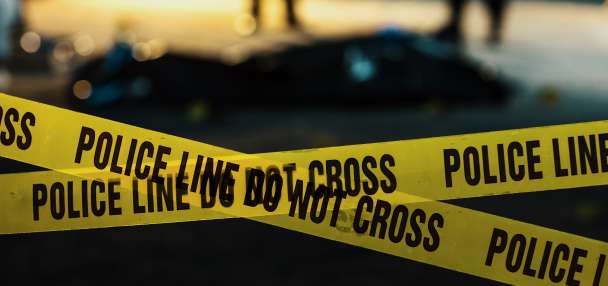Estimated read time: 5-6 minutes
This archived news story is available only for your personal, non-commercial use. Information in the story may be outdated or superseded by additional information. Reading or replaying the story in its archived form does not constitute a republication of the story.
Knight Ridder Newspapers
(KRT)
WINTERTHUR, Del. - The gloved staff in Winterthur Museum's restoration lab painstakingly sliced off the binding tape and, careful not to get a snoot full of mold, lifted off the bubble pack. Then - carefully, carefully - they turned the painting over.
"Wow."
"Geez."
"She must have been slammed into something."
Above a gash in the canvas, 27-year-old Winnie Davis, youngest child of Jefferson Davis, daughter of the Confederacy, gazed serenely across time, her image having survived from the 19th century to the 20th to the 21st.
Winnie's portrait - from 1892, when she was a queen of Mardi Gras - hung above a mantel at Beauvoir, the Mississippi estate of the Confederate president.
But on Aug. 29, a 30-foot wall of water from the Gulf of Mexico roared up the Biloxi beach, across a two-lane highway, and straight through Beauvoir - French for "beautiful view."
Winnie's portrait was among untold amounts of irreplaceable artwork and artifacts that were damaged or lost at museums and historical properties during Katrina.
Now, with the help of grants, some of those treasures are going to Winterthur, near Wilmington, Del., to be restored under a new partnership between the decorative-arts museum, the University of Delaware's art conservation program, Beauvoir, and a Biloxi pottery museum.
Debra Hess Norris, chair of the university's art conservation department, had been to the coast as part of a small delegation that assessed cultural damage. She returned home vowing to do more.
About the same time, Winterthur staffers were trying to figure out how to volunteer their help. They decided to team up and focus on two institutions.
The first Delaware team went south in late September to do conservation work and see what could be taken back.
The losses were "just staggering," said Jennifer Mass, Winterthur senior scientist and project director.
Five of Beauvoir's seven buildings had disappeared, swept from their foundations. Artifacts were washed across 55 acres and a bayou, joined by debris from a Denny's restaurant and suburban homes.
Stepping gingerly atop the refuse, workers could go 200 yards or more without seeing ground. Little by little, they began to find objects.
A bulldozer operator alerted Mark Anderson, Winterthur furniture conservator, to an item that turned out to be Jefferson Davis' lap desk - in pieces.
The workers began to recover rusted muskets and sabers, but of what vintage? Reproductions from the gift shop had also washed outside. It was difficult to tell them from the originals.
In most museum disasters - a sprinkler break, say - conservators start instant artifact triage, deciding what needs to be done in 24 hours, in 48, in 72. Here, artifacts had rusted and moldered for weeks. And more turned up every day.
"How do you prioritize?" wondered Margaret Little, Winterthur objects conservator.
The mourning dress of Davis' wife is in tatters. All that's left of his Senate chair - in those days, senators took them when they left office - is one brass caster.
The nearby Ohr-O'Keefe Museum of Art, designed by Frank Gehry, was crushed by a floating casino. Its collection of pottery by George Ohr, the "mad potter of Biloxi," had been packed to protect it from Katrina, but books, paintings and furniture were sodden.
Ohr director of exhibitions Anna Stanfield, an art historian by training, did not have the expertise to deal with all the mold.
"We were desperate," she said, until some of the nation's top conservators showed up.
Patrick Hotard, Beauvoir's executive director, considers the university and Winterthur "a godsend. To have a facility of that caliber essentially adopt us ... we're just pleased beyond measure."
Dealing with such massive destruction is "taxing on a person's spirit," said Hotard, who lives in a Federal Emergency Management Agency trailer at Beauvoir, his home having washed away.
But you don't just give up on a national historic landmark. Beauvoir aims to reopen June 3, 2008, the 200th anniversary of Davis' birth.
Winnie Davis' portrait, 42 by 67 inches, was still hanging after the water receded, but the high-water mark is nearly to the ceiling, Hotard said.
That portrait and two others are "just the beginning," Norris said.
At a table in Winterthur's lab, Joyce Hill Stoner, a Delaware art conservation professor, bent over the portrait of a bearded Jeff Davis and dabbed it with a chemical to "consolidate" the cracked and curling paint. Katrina had washed it to the Beauvoir parlor floor.
It had taken the staff 2 1/2 hours just to unpack it. Part of the canvas was loose, and if it sagged too much, the paint would pop off.
Both paintings have been scraped and partially obscured by a milky crust of ruined varnish. "They look like they've been sandblasted," Mass said.
Winnie's portrait is slathered with mud and bulges from debris wedged behind the canvas. Stoner often finds bug carcasses and pine needles - fallen from holiday garlands - stuffed behind artwork. Here she expects to find mud, sand, plaster dust and more.
Gazing back at Winnie, the crew wondered what her ruby tiara, necklace and scepter signified. Workers thought she might be sitting in Davis' Senate chair. And is the background a magnolia tree? Are the stretchers for the canvas made of local cypress?
The challenge in restoring the paintings, as for many objects, is that their documentation has been lost. Reams of papers that detail the museum's collection were fused by the floodwater.
In a lab that Winterthur staffers think of as "CSI" meets "Antiques Roadshow," they will use spectrometers and microscopes and chromatographs to test paint and varnish.
This will tell them what's in the paint - lead or copper, for instance, walnut oil or linseed - and what chemicals they can use without doing harm.
They will remove discolored varnish with thousands of solvent-soaked swabs, painstakingly rubbing tiny sections of canvas. They will fill scrapes with special putty and then "inpaint."
As Stoner inspected Winnie's portrait, she realized to her dismay that it had been damaged and repaired once before. But how? And with what? This complicated things.
She shook her head and reconsidered her estimate of a year or more to restore the painting. "Make that 2 1/2 years," she said.
---
(c) 2005, The Philadelphia Inquirer. Distributed by Knight Ridder/Tribune News Service.








